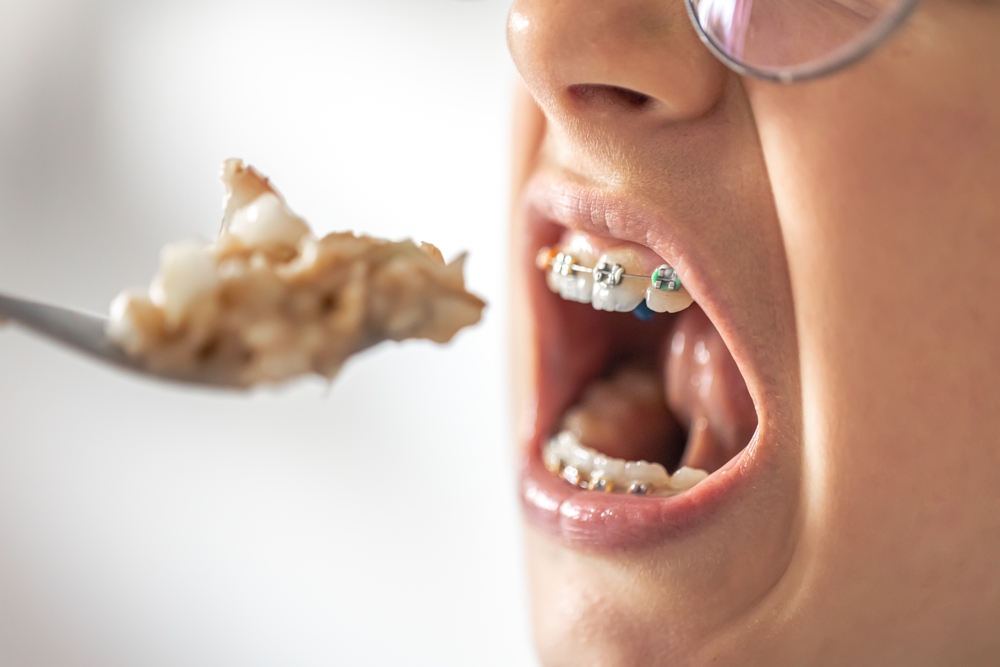Maintaining Oral Health While Wearing Braces: A Comprehensive Guide
Wearing braces can be a transformative experience for individuals seeking a straighter, healthier smile. However, the journey comes with its own set of challenges, especially regarding oral hygiene. In this guide, we’ll explore the various aspects of maintaining oral health while wearing braces, from daily routines to handling discomfort.
The Challenges of Oral Care with Braces
The components of braces, including wires and brackets, create an intricate structure that can be somewhat difficult to navigate during daily oral hygiene practices.
1. More Surface Area for Food and Plaque Buildup
One of the primary challenges is the increased surface area for food particles and plaque to accumulate. Unlike the smooth surfaces of natural teeth, braces create nooks and crannies that become perfect hiding spots for debris. This characteristic also elevates the risk of developing cavities and gum problems if not addressed diligently.
2. Food Trapped Under Wires
The wires and brackets not only make thorough cleaning more demanding but also create areas that are challenging to reach with standard brushing and flossing techniques. The intricate design of braces can trap food particles around brackets and under the wires, providing a conducive environment for bacteria to thrive. Improper cleaning techniques can lead to the formation of plaque.
3. Changed Saliva Flow
Moreover, braces may alter the normal flow of saliva, which plays a vital role in neutralizing acids and maintaining a healthy oral environment. As a result, individuals with braces may experience changes in saliva production, potentially leading to a higher susceptibility to cavities.
Daily Oral Hygiene Routine with Braces
Establishing a consistent and thorough daily oral hygiene routine is the foundation of maintaining oral health during orthodontic treatment. This section will delve into the importance of regular brushing and flossing and provide a step-by-step guide for an effective routine.
Choosing the Right Toothbrush and Tools
When choosing a toothbrush, opt for a soft-bristled brush with a small head to navigate around braces and wires effectively. Electric toothbrushes with oscillating or rotating heads can be particularly beneficial, ensuring a thorough cleaning. Interdental brushes and floss threaders are indispensable tools for reaching tight spaces between wires and teeth. Water flossers provide an additional option for flushing out debris.
Brushing Techniques for Braces Wearers
Start by holding the toothbrush at a 45-degree angle, aiming the bristles towards the gumline and brackets. Gently brush in small circular motions, ensuring each tooth and bracket is thoroughly cleaned. Pay extra attention to the areas around wires and bands. To reach tight spaces, use interdental brushes or floss threaders to navigate between wires and teeth. A systematic approach, dividing the mouth into sections, ensures no area is overlooked.
Flossing with Braces
Traditional flossing can be challenging due to wires and brackets, making floss threaders or orthodontic floss essential. Gently thread the floss between teeth and wires, carefully navigating to remove trapped debris. Consider using a reusable floss threader or orthodontic floss designed for braces. Regular flossing, coupled with proper brushing techniques, ensures comprehensive oral hygiene and helps prevent potential issues during orthodontic treatment.
Water Flossers
Water flossers, or oral irrigators, can be an excellent alternative to traditional flossing. These devices use a stream of water to remove plaque and debris from between teeth and around braces. Water flossers are gentle on the gums and can be particularly useful for individuals who find traditional flossing challenging.
Interdental Brushes
Interdental brushes come in various sizes and can be used to clean between brackets and wires. They are particularly effective in removing larger particles that may be difficult to dislodge with floss. Choose the appropriate size of interdental brush for the gaps between your teeth and braces.
Take Your Time
Flossing with braces requires patience and careful maneuvering. Take your time to ensure that you thoroughly clean between each tooth and around the braces. Rushing can lead to inadequate cleaning and potential damage to braces.
Consult Your Orthodontist
Your orthodontist is a valuable resource for brushing and flossing tips tailored to your specific braces. They can provide guidance on techniques and recommend tools based on the type of braces you have.
Proper Diet and Nutrition for Braces Wearers


Proper diet and nutrition are integral components of maintaining oral health during orthodontic treatment with braces. A braces-friendly diet not only minimizes the risk of damage to the braces but also supports overall dental health, helping individuals achieve the best possible results from their orthodontic journey. Here, we’ll explore the key considerations for a diet that aligns with the needs of braces wearers.
Soft and Non-Sticky Foods
Opt for soft and non-sticky foods to reduce the risk of damaging braces. Chewy and sticky foods can get lodged in the brackets and wires, potentially causing breakage or displacement. Examples of soft foods include yogurt, mashed potatoes, pasta, and steamed vegetables.
Avoid Hard and Crunchy Foods
Hard and crunchy foods can exert excessive pressure on braces, leading to brackets popping off or wires bending. Steer clear of nuts, hard candies, popcorn, and crunchy fruits like apples and carrots.
Cut Foods into Bite-Sized Pieces
Cut larger foods into smaller, more manageable pieces to make eating easier on both your braces and teeth. This practice minimizes the force applied to braces during chewing and reduces the risk of damage.
Mind Your Sugar Intake
Be conscious of sugar intake, as sugary foods can contribute to plaque formation and increase the risk of cavities. Choose sugar-free or low-sugar alternatives when possible and maintain diligent oral hygiene practices.
Stay Hydrated
Drinking water is essential for overall health and helps flush away food particles, reducing the risk of plaque buildup.
Avoid Chewy and Gummy Treats
Chewy and gummy candies can adhere to braces and are challenging to clean thoroughly. Instead of sticky sweets, consider sugar-free gum (with approval from your orthodontist) to help stimulate saliva and keep your mouth fresh.
Consume Calcium-Rich Foods
Maintain a diet rich in calcium to support the health of your teeth and bones. Dairy products, leafy greens, and fortified foods are excellent sources of calcium.
Vitamin C for Gum Health
Incorporate foods high in vitamin C to promote gum health. Citrus fruits, strawberries, and bell peppers are good sources of this essential vitamin.
Limit Acidic Foods and Beverages
Acidic foods and beverages, such as citrus fruits and sodas, can contribute to enamel erosion. Consume them in moderation and rinse your mouth with water afterward.
Regular Orthodontic Check-Ups and Cleanings
Regular orthodontic check-ups and cleanings are essential. These appointments, typically scheduled every few weeks, allow orthodontists to monitor progress, make necessary adjustments, and address emerging issues promptly. Professional cleanings during these visits ensure the removal of plaque and tartar around brackets and wires, safeguarding against decay. Consistent monitoring and maintenance through these check-ups can help achieve your desired result and promote overall oral health.
Dealing with Discomfort and Orthodontic Issues
Navigating discomfort from braces and orthodontic problems requires a proactive approach. For minor discomfort, over-the-counter pain relievers and orthodontic wax offer relief. Should a wire or bracket break, avoid touching or cutting it yourself. Instead, use orthodontic wax to secure loose components and schedule an immediate orthodontic appointment. Swelling or irritation can be eased with cold compresses. Quick response and professional guidance during these situations ensure continued progress and minimize disruptions in your orthodontic journey.
Your Dream Smile Awaits
Wearing braces doesn’t mean sacrificing oral health. By following a comprehensive oral care routine, making wise food choices, and seeking regular professional care, individuals can navigate the challenges of orthodontic treatment while maintaining a healthy and radiant smile. If you’re ready to begin your braces journey, contact us at Aurora Orthodontics today!

